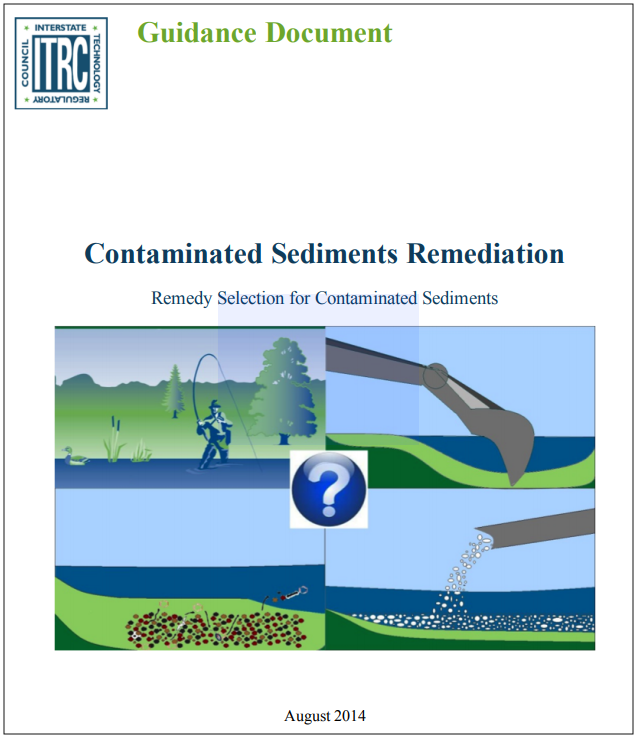Key Advantages
Low-permeability provides effective sequestration of contamination in a much thinner layer than conventional caps.
Use of highly cohesive bentonite materials increases cap stability and resistance to high intermittent flow events.
Thin layer will limit the amount of dredging required in a dredge-and-cap approach, dramatically reducing volume of dredged material and cost.
Thin layer will minimize the potential impact on waterway use/navigation and potential flood impacts.
Less total material used reduces material handling, transport, and placement time.
ITRC’s Contaminated Sediments Guidance Document defines “Conventional Capping” as follows:
“Conventional capping generally uses natural, largely inert materials in a loose-placed form for physical and chemical isolation. Sand or similar granular material is often the first choice for conventional capping and provides a physical isolation barrier to sediment transport and biological intrusion into the contaminated sediments. Sand is easily placed and, in the absence of facilitated transport mechanisms (e.g. rapid groundwater upwelling), can be effective at containing hydrophobic, solid-sorbed contaminants. Other natural materials are sometimes used, including dredged material and sediments or soils from nearby locations.
Although the goal of conventional caps is isolation, natural materials often do not provide adequate sequestration without very thick layers. Upwelling or tidal pumping may also cause rapid contaminant transport through the cap.
The following conditions may limit the effectiveness of a conventional cap, particularly one that contains an inert material such as sand:
Weakly-sorbed contaminants that are relatively mobile in the environment
Conditions in the interstitial water that significantly enhance contaminant mobility (e.g. rapid groundwater upwelling or tidal pumping)
The presence of a mobile NAPL
Gas ebullition at a rate sufficient to cause substantial contaminant migration
Highly concentrated or toxic contaminants, for which even low rates of migration may lead to unacceptable concentrations or fluxes at the cap-water interface into the overlying water
To improve cap performance using a thin-layer approach, the addition of low-permeability clays or fine-grained materials has been successfully developed and implemented at full-scale. Aquablok® materials will form a low-permeability isolation cap over contaminated sediments in a layer thickness of 6 inches or less.
AquaBlok, Ltd.’s bentonite-based low-permeability capping materials were tested extensively by the U.S. EPA under the Superfund Innovative Technology Evaluation (SITE) program as early as 2007. Key questions and conclusions from the report are as follows:
Stability: Will it stay in place?
“Overall results of the SITE demonstration indicate that the AquaBlok material is highly stable and likely more stable than traditional sand capping material even under very high bottom shear stresses.”
Contaminant Isolation: Will it seal off COCs?
“The material is also characteristically more impermeable, and the weight of evidence gathered suggests it is potentially more effective at controlling contaminant flux than traditional sand capping material.”
Restoration: Will the habitat recover?
“AquaBlok also appears to be characterized by impacts to benthos and benthic habitat generally similar to traditional sand capping material.”
AquaBlok offers several advantages over sand in deep water or wetland sediments in select circumstances. As opposed to more permeable sand material, AquaBlok application does not result in significant compaction-related movement of sediment pore waters into capping material, thus maximizing the effective, contaminant-free thickness of an AquaBlok cap. AquaBlok displays significantly higher resistance to unidirectional current flow (stability) than sand, which provides more flexibility in cap design (in certain cases no armor needed), as well as the range of hydrologic environments into which AquaBlok caps could be applied. Such a relatively thin, yet effective cap offers the ability to minimize restrictions on waterway uses and navigation. This contrasts with sand caps, which may need to be applied at thicknesses significantly greater than one foot to meet most functional objectives.




